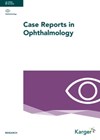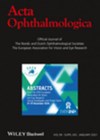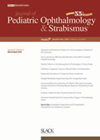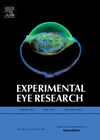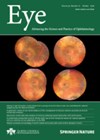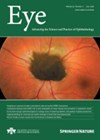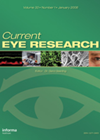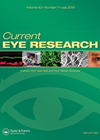
Journal Reviews
Proning and ocular injury
This systemic review and meta-analysis investigated the incidence and type of ocular injuries reported in adult critical care from both prone and supine patients between January 1990 and July 2020. They reviewed 11 randomised controlled trials. In three trials, 28...
Presentation of conjunctival intraepithelial neoplasia
Ocular surface squamous neoplasia is the umbrella term for malignancies of the conjunctiva and within the spectrum lies conjunctival intraepithelial neoplasia (CIN) – a non-invasive malignancy. CIN has been implicated with ageing, smoking and ultraviolet light exposure. The typical manifestation...
A robotic armrest for ophthalmic surgery
Robot-assisted ophthalmic surgery has been the focus of intense interest in recent years. In this study, the authors tested the potential utility of a robotic armrest in ophthalmic surgery. The iArmS device consists of a forearm rest attached to a...
Light tolerance in infectious keratitis
The authors presented the findings of a study that aimed to identify the maximum irradiance (power received by a surface per unit area) that can be tolerated by photophobic patients with infectious keratitis (IK). They recruited 30 patients (14 women...
Ophthalmology practice during COVID-19
The purpose of this study was to share the experiences in treating paediatric ophthalmology patients during the pandemic and to report institution guidelines. A flowchart was devised for telephone triage and subsequent follow-up of patients through telemedicine or face to...
Characteristics of limbal lymphatic vasculature on confocal microscopy
This ex vivo study aims to describe the morphological characteristics of the human limbal lymphatic vasculature using confocal microscopy and immunofluorescence. Twelve corneal specimens are obtained from human donor eyes. These corneal buttons are not suitable for transplantation due to...
Review of pathogenesis of Acanthamoeba keratitis
In this review, the author summarised the current microbiomic and immunological evidence related to the pathogenesis of Acanthamoeba keratitis (AK). AK has been described for almost 50 years, but the exact biology of the disease remains perplexing. Acanthamoeba spp. are...
Meta-analysis of treating meibomian gland dysfunction (MGD) with topical / oral azithromycin
This study pooled the clinical outcomes of 18 high-quality studies managing MGD with azithromycin. Symptom score was the primary and clinical signs were the secondary outcome measures. Overall effectiveness of topical azithromycin (TA) and oral azithromycin (OA) was measured by...
First systematic review of COVID-19 colonisation of ocular tissues and secretions
The authors present the first systematic review summarising all the data regarding SARS-CoV-2 colonisation of ocular and periocular tissues and secretions. They reviewed all publications between December 2019 to April 2020 in the Cochrane Library, Medline, World of Science and...
Smartphone use and its effects on eyes
Longitudinal pilot study on 12 young healthy adults comparing effects of smartphone use over a 60-minute period. Reading conditions and smartphone use was standardised for all participants. Ocular symptoms, tear function and binocular vision were assessed before and after each...
Corneal crosslinking in pellucid marginal degeneration
Fourteen studies were included in this first review examining the use of corneal-crosslinking (CXL) to treat pellucid marginal degeneration (PMD). PMD is a bilateral, non-inflammatory corneal thinning disorder characterised by inferior peripheral corneal thinning 1-3mm from the limbus in the...
Microbiology, risk factors and outcomes of microbial keratitis in Sydney, Australia
The authors present a retrospective case series including all patients with microbial keratitis and ocular surface diseases (OSD), including dry eye, blepharitis, Stevens-Johnson syndrome and / or ocular cicatricial pemphigoid, over a five-year period between 2012 and 2016. A total...


